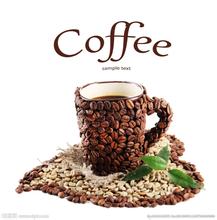How to pick and handle coffee beans how to make good siphon coffee
natural drying
The picked berries are sent to a drying plant, where they are sorted according to ripeness as a basis for time and degree of sun exposure. Overripe berries usually take 1-3 days, red berries take 5-6 days, and green unripe fruits take 1-2 weeks. After the sun treatment of dried fruit, need to go through the shell machine, remove the peel, pulp and silver skin, this way does not go through washing treatment, use sunlight natural drying, so the treatment process is more susceptible to weather, and outdoor treatment is more likely to mix foreign matter and undesirable substances, follow-up treatment is also more troublesome, but coffee beans have rough natural flavor, have a special taste, time consumption, cost is not expensive, washed beans have general pure charm, However, since the time from harvest to washing treatment should not be too long, time control is very important. Generally, washing treatment plants should not be too far away from coffee gardens, and berry peel should be peeled within a few hours. The washing method is to soak the berries in a large water tank first. The withered inferior beans will float on the water surface. These inferior beans will be eliminated first. The good berries will be pumped to the pulp removal machine to remove the peel and pulp. Then the coffee beans will be fermented for about 1/2 days to 2 days or even longer. According to the degree of fermentation, select the appropriate time point to wash the surface layer of fermentation mucus, washed and screened beans need to be naturally dried by sunlight or dryer treatment to prevent secondary fermentation. After completion, many farms are usually preserved in this state. After receiving the order, the inner peel and silver skin are removed by a film remover. The less friction in the process, the more aromatic substances can be left. Finally, the bean sifter is used to screen out the defective products such as discoloration and fermentation. If it is a premium product, it requires manual final screening. Although the machine can roughly separate the beans, if it is underripe, overripe beans or other defective beans, it is still necessary to manually process the beans more carefully.
Berries picked from coffee trees do not show their value until they are properly treated. Therefore, it is very important to remove the skin, pulp, endocarp and other priceless plants and then process their seeds into valuable commodities. The processing method can be divided into two kinds, and the processed green beans also have different flavors and characteristics.
Picking coffee beans is generally divided into manual harvesting and machine harvesting. Manual harvesting is more time-consuming and laborious, and it is mostly used in orchards with noble varieties or mountain terraces. Manual harvesting can select fully ripe berries, but the speed is slow, generally used for Arabica seeds or areas that are not suitable for large mechanical harvesting. Coffee franchisee brand coffee domain selected arabica beans are hand-picked, select mature and full varieties. Harvesting machines at lower elevations or on large farms, often Robusta species, shake almost all berries off the trees, including unripe beans

Important Notice :
前街咖啡 FrontStreet Coffee has moved to new addredd:
FrontStreet Coffee Address: 315,Donghua East Road,GuangZhou
Tel:020 38364473
- Prev

How many ways are there to bake coffee
Very shallow baking (LIGHT Roast): the degree of baking; very shallow baking, also known as shallow baking. The lightest roasting degree of all roasting stages, the surface of the coffee beans is a light cinnamon color, its taste and aroma are insufficient, this state is almost undrinkable. It is generally used for testing and seldom for tasting. CINNAMON Roast: degree of baking; light baking, also known as meat
- Next

What are the cultivation techniques of coffee trees? what is the reason for the astringency of coffee?
It is required that the origin of coffee tree [4] is in Ethiopia in Africa. In botany, coffee trees belong to the evergreen trees of the subgenus Rubiaceae, and coffee beans, commonly known as coffee beans, are actually the seeds of the fruit of coffee trees. They are called coffee beans only because they are shaped like beans. Climate is the decisive factor for coffee cultivation. Coffee trees are only suitable for growing in the tropics or subtropics, so the south
Related
- Does Rose Summer choose Blue, Green or Red? Detailed explanation of Rose Summer Coffee plots and Classification in Panamanian Jade Manor
- What is the difference between the origin, producing area, processing plant, cooperative and manor of coffee beans?
- How fine does the espresso powder fit? how to grind the espresso?
- Sca coffee roasting degree color card coffee roasting degree 8 roasting color values what do you mean?
- The practice of lattes: how to make lattes at home
- Introduction to Indonesian Fine Coffee beans-- Java Coffee producing area of Indonesian Arabica Coffee
- How much will the flavor of light and medium roasted rose summer be expressed? What baking level is rose summer suitable for?
- Introduction to the characteristics of washing, sun-drying or wet-planing coffee commonly used in Mantenin, Indonesia
- Price characteristics of Arabica Coffee Bean Starbucks introduction to Manning Coffee Bean Taste producing area Variety Manor
- What is the authentic Yega flavor? What are the flavor characteristics of the really excellent Yejasuffi coffee beans?

